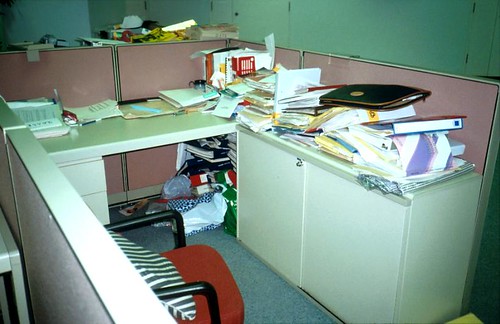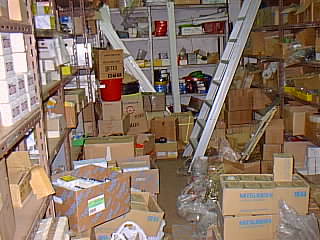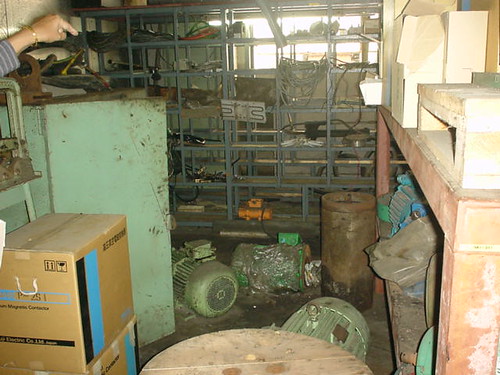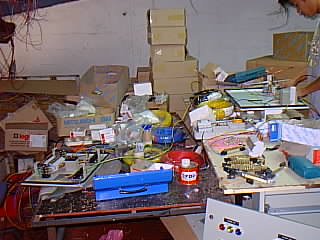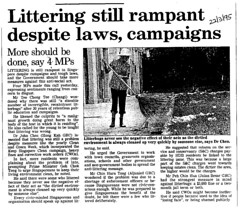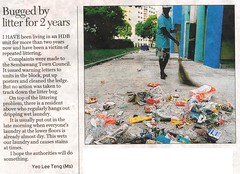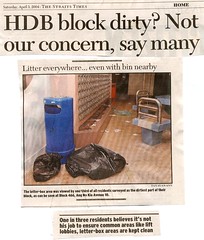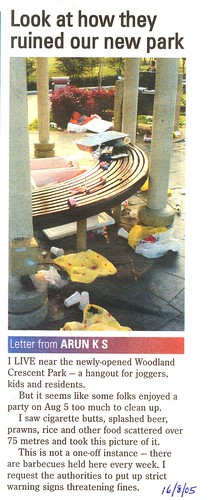
An Example from the home
My kids are very fortunate. They each have their own personal PC’s. But I was quite angry when I saw how dirty their machines were. Not only were the difficult-to-reach cables at the back of the PC filthy, even the PC body and monitor were covered with a layer of dust. They promised (after repeated naggings) to do it after their exams.
One day, they told me they have done it. I was surprised, because I didn’t recall seeing them cleaning their workstation in the manner that I expect. On checking I found that only surface of the PC body has been wiped. The back was just as filthy and dusty as ever.
An Example from the factory
Once I was working with a small local furniture manufacturer. This was many years ago, and I had just started working as a management consultant and was still quite new to the technique of 5S. I noticed that their machines were very dirty and I convinced the boss to implement the third ‘S’ – Seiso. He allowed the workers to stop work about 10 to 15 minutes before the end of their work shift to clean their machines.
On the first day, I eagerly went down to the factory 5 minutes before closing to see how the workers were doing. I expected to see them busily cleaning their machines. Guess what I saw. They were all cleaned up and waiting for the siren next to the clock card machine. I then went to one of the machines. It looked quite clean. The saw dust have been swept away from the surface of the machine. But when I banged on the machine, lots of dust fell to the ground.

The lesson from these two examples is this: Cleaning must be properly planned and should not be left to the workers. The supervisor or group leader should make a Cleaning Schedule and supervise its implementation until he is happy that everyone understands his role.
How to prepare a Cleaning Schedule
It’s quite simple really. All you need to consider are the “5 wives and 1 husband”. Well actually in this case, 3 wives will suffice.
1) What – make a list of the cleaning tasks. If the machine is a huge one, divide it into sections first.
2) When – decide on the frequency of each of the cleaning tasks; which ones need to be done daily, which ones weekly and so on.
3) Who – where more than 1 persons are involved, divide out the work.
4) How – decide on the best method for each task and the tools required.
After that it is just a simple matter of putting all the above into a big chart; preferably with diagrams to illustrate the key points and of course some warnings about safety precautions and so on. Put up the Cleaning Schedule on a prominent place near the machine and supervise the implementation. Fine-tune your procedure as necessary along the way.
After that it is just a simple matter of putting all the above into a big chart; preferably with diagrams to illustrate the key points and of course some warnings about safety precautions and so on. Put up the Cleaning Schedule on a prominent place near the machine and supervise the implementation. Fine-tune your procedure as necessary along the way.
F-Label Technique
Seiso is a form of Checking or Inspection.
Remember this principle that we learned last time. As the workers carry out their cleaning or Seiso, make sure they keep a look out for minor defects. Minor defects are problems in the machine or equipment which do not need urgent attention because the machine can still run with them. Examples are dents, broken catches, missing nuts and screws, loose wires etc. In most factories, operational people will not take the initiative to rectify or report these minor problems. As a result they will tend to accumulate until the machine finally breaks down.
The secret is to achieve a situation where your machines are all working like new is to thoroughly implement Seiso and ensure that all these minor defects are repaired as soon as possible. The Japanese like to use a technique called F-label technique to handle such minor defects.
1) As soon as a minor defect is discovered, the worker should repair it himself if possible. Sometimes it could be something as simple as a missing screw or a loose wire.
1) As soon as a minor defect is discovered, the worker should repair it himself if possible. Sometimes it could be something as simple as a missing screw or a loose wire.
2) If practical, attach an F-label to the machine near to this minor defect. F stands for “fault”, but our local boys like to think of a dirty word.
3) Make a list of all the minor defects and discuss them with the Maintenance department to work out a plan to repair them all.
4) After each defect is repaired, remove the F-Label from the machine. Otherwise keep it there, even if they make the machine look unsightly, as if it was plastered with bandages; which it actually is in a certain sense.
If you implement the Seiso technique for equipment cleaning that I have recommended here, I assure you that you can safe yourself many heartaches resulting for machine malfunctions and stoppages.
Remember Murphy’s Law, anything that can go wrong will go wrong ….. and they usually go wrong at the worse time, if I may add.








